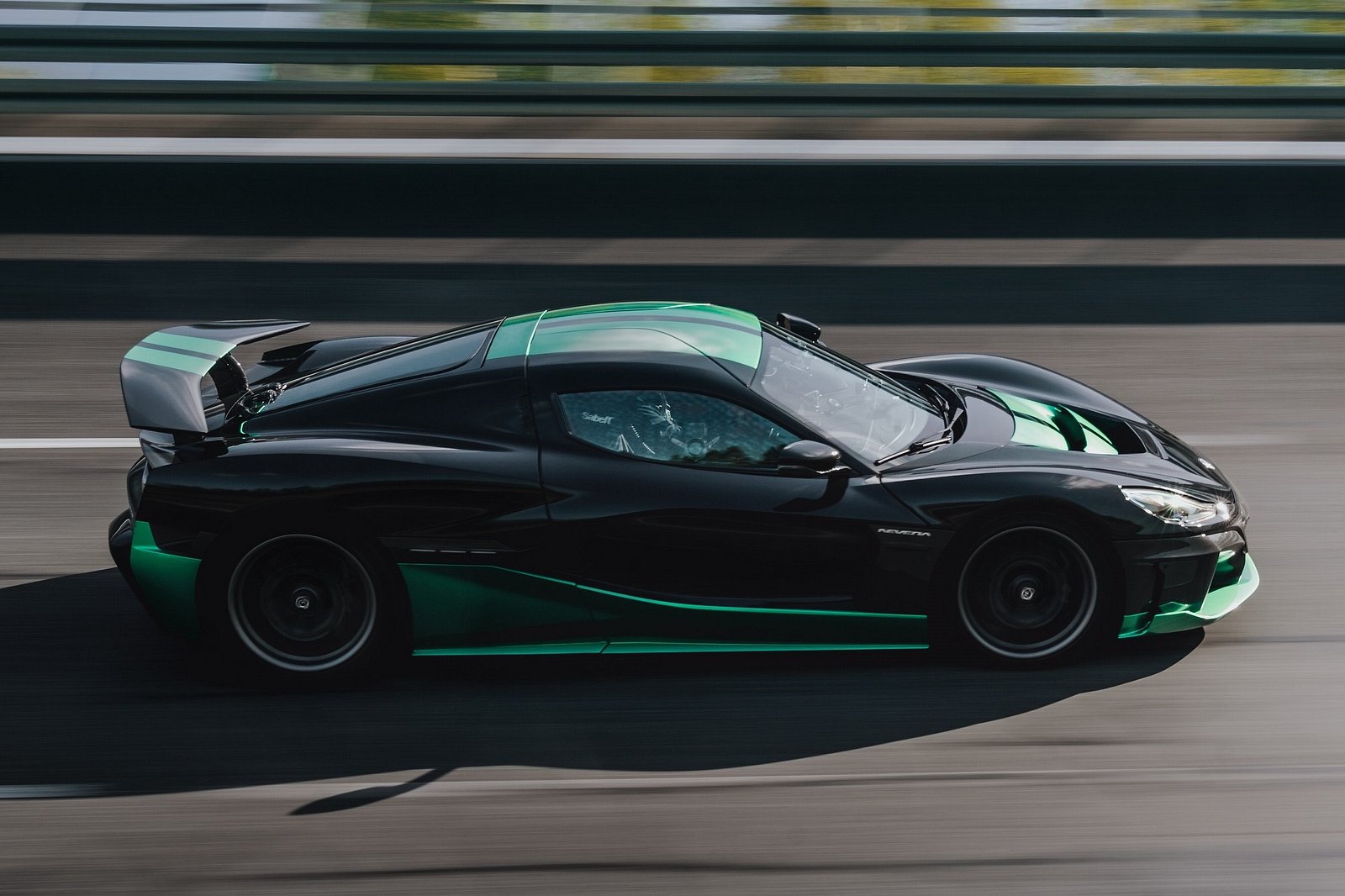A behind-the-scenes video has shown conditions were far from ideal when the 1,914-hp EV lit up the Green Hell.
YouTuber and Nurburgring driving instructor Misha Charoudin has shared some fascinating behind-the-scenes footage of what happened before and during the record-breaking Nurburgring lap set by the Rimac Nevera while also revealing that an even faster lap time is possible for this four-motor EV.
The new Nevera Time Attack supercar officially completed a lap in 7:05.298 over the full circuit. In doing so, it shattered the Tesla Model S Plaid's previous record for an electric production car by 20 seconds. A lot goes into prepping for a record attempt like this one, and now we have more insight into the Rimac team's journey, thanks to Charoudin.
The day of the spectacle included the preparation of a Polestar 2 as a camera car to capture shots of the Nevera around the circuit. That morning, Charoudin reported that weather conditions were "not favorable" as there was a fair amount of moisture in the air, and engineers who went for a few test laps reported that the track was "greasy." Later in the day, when the actual attempt took place, they would face even more adversity.
Charoudin then shows us the roll cage equipped as a further safety measure, despite the Nevera's ultra-strong monocoque. It's no surprise that Rimac took this extra precaution considering what could go wrong when pushing a 1,914-horsepower supercar to its limits. This "NASCAR-spec" roll cage required the doors of the Nevera to be emptied. However, any weight saved by emptying the doors was balanced out by the addition of the roll cage, which weighs around 95 pounds.
Another 88 lbs or so of measuring equipment was installed in the Nevera, which is visible when lifting the rear hatch. An on-site notary was in attendance to verify every detail, even going so far as checking the driver's passport to ensure it was really him.
Once the car was delivered by truck just before the lap attempt, the tires - wrapped in tire warmers, as there wasn't enough time to warm up the tires the old-fashioned way - were fitted. Charoudin confirmed that the team was attempting a possible sub-seven-minute time.
With Croatian racing driver Martin Kodric at the wheel, the first attempt was ready to go at the track, which had been closed off to other cars - just as well since pretty much any other production car would get in the way of the extremely powerful Nevera.
The first run resulted in a time of 7:07 minutes (already a new record). By this point in the day, conditions had warmed up considerably to about 86 degrees Fahrenheit - and even hotter on the track itself. "To be honest, with these temperatures, [sub-seven minutes], which is, of course, the magic number, I don't think it's going to happen," said a disappointed Charoudin.
The next time of 7:05.298 was the record that stood, delighting the team. But there was also a hint of disappointment among the Rimac crew, as sub-seven was definitely possible.
In a short video clip of the Nevera's run, it could be seen leaving obvious tire marks on the track. Charoudin said this was due to the high temperatures, with the tires literally "melting away." In optimal temperatures, the Nevera will very likely dip below seven minutes, but the official numbers are already extraordinary and confirm its status as the EV to beat on the famous Nurburgring.
Perhaps Rimac may return on a cooler day and set an even quicker time.
 Rimac Automobili
Rimac Automobili
 Rimac
Rimac
 Misha Charoudin/YouTube
Misha Charoudin/YouTube
 Misha Charoudin/YouTube
Misha Charoudin/YouTube
 Misha Charoudin/YouTube
Misha Charoudin/YouTube
 Misha Charoudin/YouTube
Misha Charoudin/YouTube
 Misha Charoudin/YouTube
Misha Charoudin/YouTube
 Misha Charoudin/YouTube
Misha Charoudin/YouTube
 Misha Charoudin/YouTube
Misha Charoudin/YouTube
 Misha Charoudin/YouTube
Misha Charoudin/YouTube
 Misha Charoudin/YouTube
Misha Charoudin/YouTube
 CarBuzz
CarBuzz
Join The Discussion